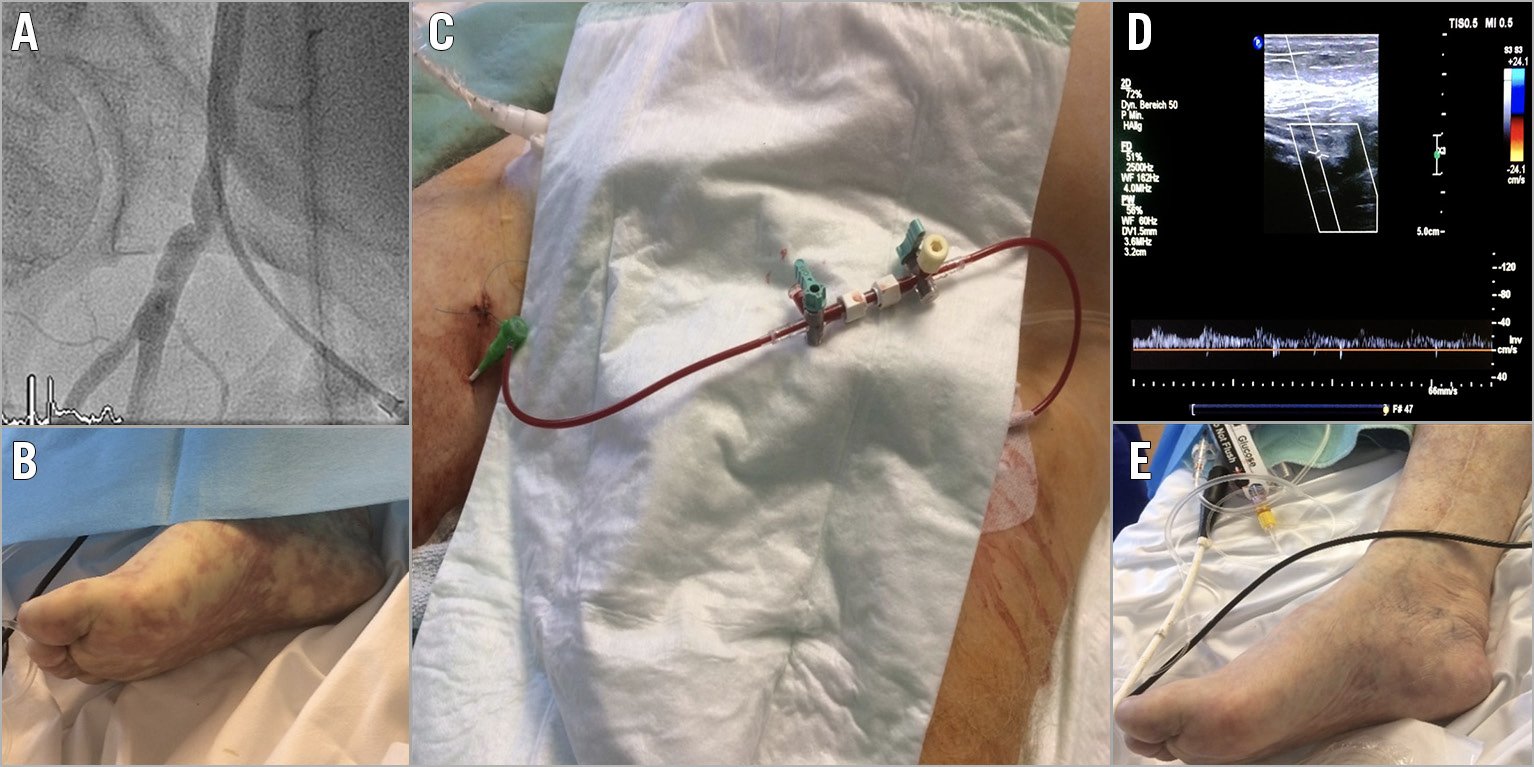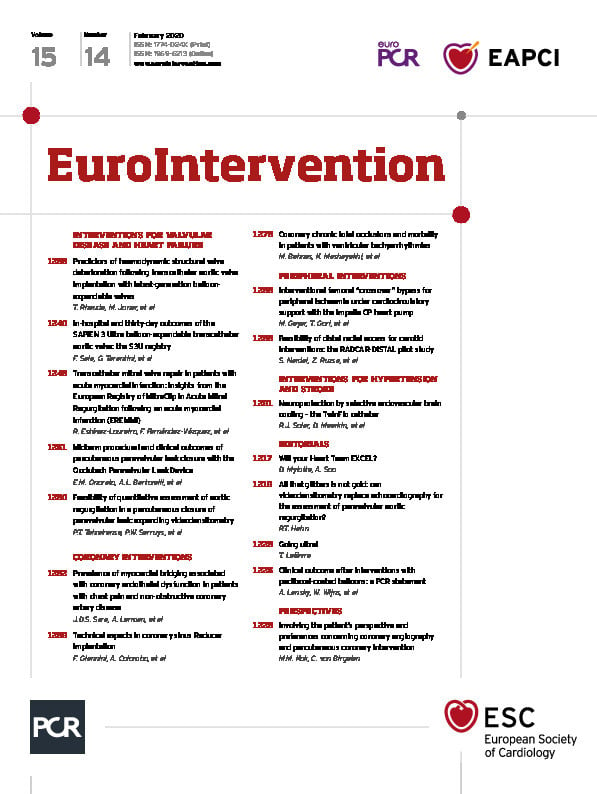

Figure 1. Interventional femoral “crossover” bypass under Impella CP. A) Angiography (via 6 Fr sheath) of the right femoral axis before introduction of the Impella. B) Critical limb ischaemia (right leg) under extracorporeal augmentation with the microaxial pump. C) Interventional femoral “crossover” bypass. D) & E) Doppler signal and aspect of the right leg after restoration of limb perfusion by interventional “crossover” bypass.
In recent years, cardiocirculatory support by axial flow pump (Impella®; Abiomed, Danvers, MA, USA) has become a routinely used advanced therapy for protected percutaneous coronary intervention (PCI) and cardiogenic shock. In comparison to extracorporeal life support (ECLS), where peripheral complications by cannulation are not uncommon (8-25%)1, little evidence exists on the incidence of limb ischaemia with the Impella heart pump and its therapies (3.9% in the USpella Registry vs 4.2% need for vascular surgery not further specified in the Impella-EUROSHOCK-registry)2,3, which seems to be rare due to a smaller cannula size (14 Fr in Impella CP® vs 15-17 Fr arterial cannula in ECLS).
An Impella CP® system was implanted through the right femoral artery in an 84-year-old male patient who underwent PCI under ongoing cardiogenic shock after successful cardiopulmonary resuscitation. Before implantation of the microaxial pump, angiography of the right femoral axis showed vessels of apparently sufficient diameter to accommodate the 14 Fr sheath (Figure 1A). Following coronary stenting of the right coronary artery (performed through an additional access through the left femoral artery), the patient was haemodynamically stable with a heart rate of 80 beats/minute and a blood pressure of 120/60 mmHg. After transfer to the intensive care unit (ICU), the patient developed critical limb ischaemia of the right leg distal to the cannulation site (Figure 1B). Ischaemia was confirmed by the absence of pulse and Doppler flow. An attempt to wean the patient from Impella support failed, despite ongoing maximal vasopressor therapy. In order to restore perfusion of the affected limb, the ipsilateral superficial femoral artery was cannulated in an antegrade manner with a 6 Fr sheath under sonographic guidance. A “crossover” shortcut was established by connecting the antegrade right leg sheath with the left leg sheath used for primary stenting with a male-male adapter (Figure 1C, Moving image 1). Peripheral perfusion was restored immediately and pulsatile flow in the downstream region of the leg was confirmed by sonography (Figure 1D, Figure 1E). The patient died the next day in multiorgan failure.
We show here the feasibility of an interventional approach in peripheral ischaemia under cardiocirculatory support by an axial flow pump. Since this peripheral complication may become apparent hours after implantation, a final control angiography of the cannulated limb upon discharge from the catheterisation laboratory may be important to anticipate potential ischaemic problems.
Conflict of interest statement
The authors have no conflicts of interest to declare.
Supplementary data
To read the full content of this article, please download the PDF.
Moving image 1. Bypass perfusion of the ischaemic right leg by an interventional “crossover”: an antegrade 6 Fr sheath (right) is connected to a contralateral arterial 6 Fr sheath (left). After flushing the sheath with saline solution, blood flow towards the ischaemic leg can be visualised.

